

New York Fashion Week 2016: On Marc Jacobs, those rainbow dreadlocks, and cultural appropriation — Quartz. On September 15, Marc Jacobs closed out New York Fashion Week with a grand finale of a show.
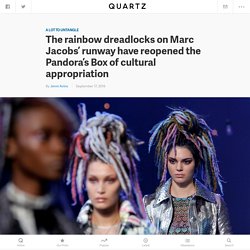
A troupe of models marched the runway in pastel satin hotpants, metallic bouffant sleeves, and vertiginous Ziggy Stardust platforms. I was nervous about what was on the models’ feet—surely someone was going to crash to the ground! Appeals Court: Employees Don’t Have a Right to Wear Dreadlocks - Law Blog. Is This The Right Way For Fashion To Do Cultural Appropriation? Rihanna Debuts Dreadlocks On Instagram. The goddess, Rihanna, is rocking a brand new 'do, and it's, of course, gorgeous.
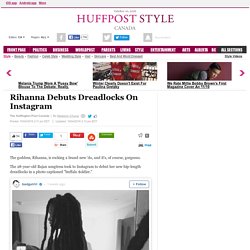
The 28-year-old Bajan songtress took to Instagram to debut her new hip-length dreadlocks in a photo captioned "buffalo $oldier. " As Refinery29 notes, the caption is presumably referencing Bob Marley's song of the same name about the Civil War soldiers, which includes the lyrics, "To me, it makes a lot of sense / How the dreadlock Rasta was the Buffalo Soldier / And he was taken from Africa, brought to America / Fighting on arrival, fighting for survival.
" The "Needed Me" songstress picked a perfect time to rock dreads — just last month the 11th U.S. Circuit Court of Appeals ruled it legal for employers to discriminate against people with dreadlocks. The ruling came after a 2013 claim was filed by a woman in Alabama who lost her job due to the hairstyle. The Dos and Don'ts of Cultural Appropriation. Sometime during the early 2000s, big, gold, “door-knocker” hoop earrings started to appeal to me, after I’d admired them on girls at school.
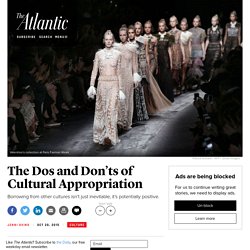
It didn’t faze me that most of the girls who wore these earrings at my high school in St. Louis were black, unlike me. What Blackface Is NOT: Lie Sang Bond’s Paris Fashion Week Face Paint Controversy. Lie Sang Bong’s Fall/Winter 2012 Collection at Paris Fashion Week Korean fashion designer, Lie Sang Bond brought some controversy to Paris Fashion Week when he painted the faces of White models with black paint during a presentation of his Fall 2012 Collection.

Due to the sensitivity of the matter, a few people are very offended while some question why the designer didn’t just employ Black models. As with 2011’s controversial “blackface” photos of Beyoncé for L’Officiel Paris, I give this the serious side-eye. As an artist, the effect Bond was trying to convey comes across beautifully. And as a woman of color, I find it difficult to be remotely offended by White models with odd-shaped black circles painted on their faces for fashion shoots or a runway shows, both of which use models as mere art canvases.
What 5 Muslim Women Think About Dolce & Gabbana's New Hijab Line. Earlier this month, Dolce & Gabbana garnered international headlines when the Italian fashion line announced it had designed a new hijab and abaya collection for Muslim women.

The iconic brand rolled out images of a glamorous woman draped in luxurious, silky robes and bright scarves, joining brands like Oscar de la Renta, Tommy Hilfiger, and Mango in an effort to expand offerings specifically to Muslims. While it was refreshing to see a global brand embrace the hijab and abaya during a time when xenophobia and Islamophobia was sweeping through parts of Europe and America, it was hard not to remain a little skeptical of a brand that, just four years ago, used racist imagery of black women as fashion accessories. Advertisement - Continue Reading Below. Dolce & Gabbana Designs Hijab and Abaya Collection for Muslim Women. News broke that Dolce & Gabbana is producing a collection of hijabs and abayas targeted to Muslim customers in the Middle East.
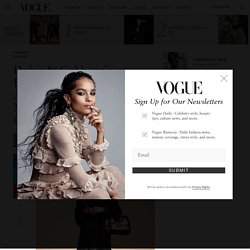
The garments, while engineered for modesty, have all the flair of any other Dolce & Gabbana collection—a little jewel-encrusted lemon here, some black lace trim there—and are styled alongside the label’s cocktail jewelry, oversize sunglasses, and patterned bags in a lookbook shoot. To Muslim women with a taste for luxury fashion, this collection is an exciting development. The line will likely prove good news for D&G’s 2016 revenue as well. According to a report by Thomson Reuters, Muslim shoppers spent $266 billion on clothing and footwear in 2013 and are expected to spend $484 billion by 2019. Following similar booms in the Chinese, Japanese, and other Asian markets in the late aughts and early ’10s, high fashion brands revamped their accessories strategies to appeal to the shopping habits of an Asian clientele.
Dolce & Gabbana Designs Hijab and Abaya Collection for Muslim Women. Muslim fashion designer makes history with hijab collection at New York Fashion Week. A Muslim fashion designer has made history as the first ever designer to feature hijabs in every outfit on a New York Fashion Week catwalk.
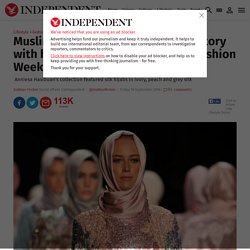
How E! Failed Giuliana Rancic in ‘Fashion Police’-Zendaya Debacle: What You Didn’t See (Exclusive) Ava DuVernay‘s “13th,” the political documentary “Weiner,” the wrenching character study “Gleason” and the ESPN miniseries “O.J.: Made in America” are among the 10 documentaries nominated as the year’s best in the inaugural Critics’ Choice Documentary Awards, which announced its nominations on Monday.
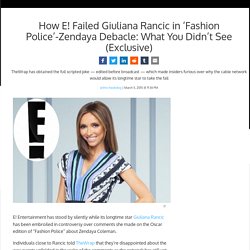
We’re Boycotting Vogue Because Of Its Appropriation & Blackface Problems. Stop, Givenchy. Just Stop. Racist runway? Indian designers' take on Marc Jacobs' SS 17 line at NYFW! Fashion designer Marc Jacobs has justified his use of dreadlocks on the runway at the recently concluded New York Fashion Week.
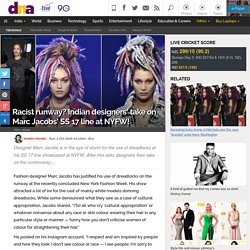
Valentino Pre-Fall 2016 Bantu Knots, Cultural Appropriation -theFashionSpot. The reigning perception among people of color is that the fashion industry loves black culture, just not black people.
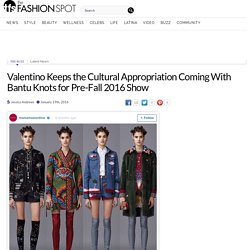
It’s a harrowing thought and yet it rings true when designers embrace hairstyles made popular in the black community and style them on a cast of mostly white models. Such was the case in Valentino’s Pre-Fall 2016 collection. Models posed in sequin gowns and embellished leather jackets wearing bantu knots in their hair.The style originated in West Africa and it’s considered a go-to look in the black community, particularly among women with natural hair. Though fashion insiders often cite Björk as inspiration for bantu knots, referencing just one music video in 1993, celebrities like Jada Pinkett-Smith, Mel B., Kimberly Elise, Left Eye, Rihanna and Lauryn Hill have all worn the style everywhere from the red carpet to magazine shoots.
Was @bjork the hair inspiration behind @MaisonValentino‘s presentation? [ 5 Fashion Mistakes That Actually Matter ] In fashion, cultural appropriation is either very wrong or very right — Quartz. Sometime during the early 2000s, big, gold, “door-knocker” hoop earrings started to appeal to me, after I’d admired them on girls at school. It didn’t faze me that most of the girls who wore these earrings at my high school in St. Louis were black, unlike me. Met China Exhibition - Cultural Appropriation. Long before Europeans and Americans began sporting qipaos and silk robes with dragon motifs — and the bastardized versions of them dreamed up by occidental designers — they enjoyed glimmers of Eastern fantasy through objects they’d see and touch every day in their homes. Chinoiserie, despite its name, is not just about China: The term encompasses a broad spectrum of Asian influences, each one conflated with the other in an exoticized pastiche. The rise of Chinese-like home products in colonial America came on the heels of their popularity in Britain, the birthplace of many settlers.
Since the Navigation Acts limited foreign trading in America, colonists were only able to purchase imported goods through Britain. As a result, the nation's initial understanding of art and design from the Far East was heavily influenced by the European point of view. After centuries of trading in Asia, the marriage of Eastern themes and European sensibilities reached maturity.